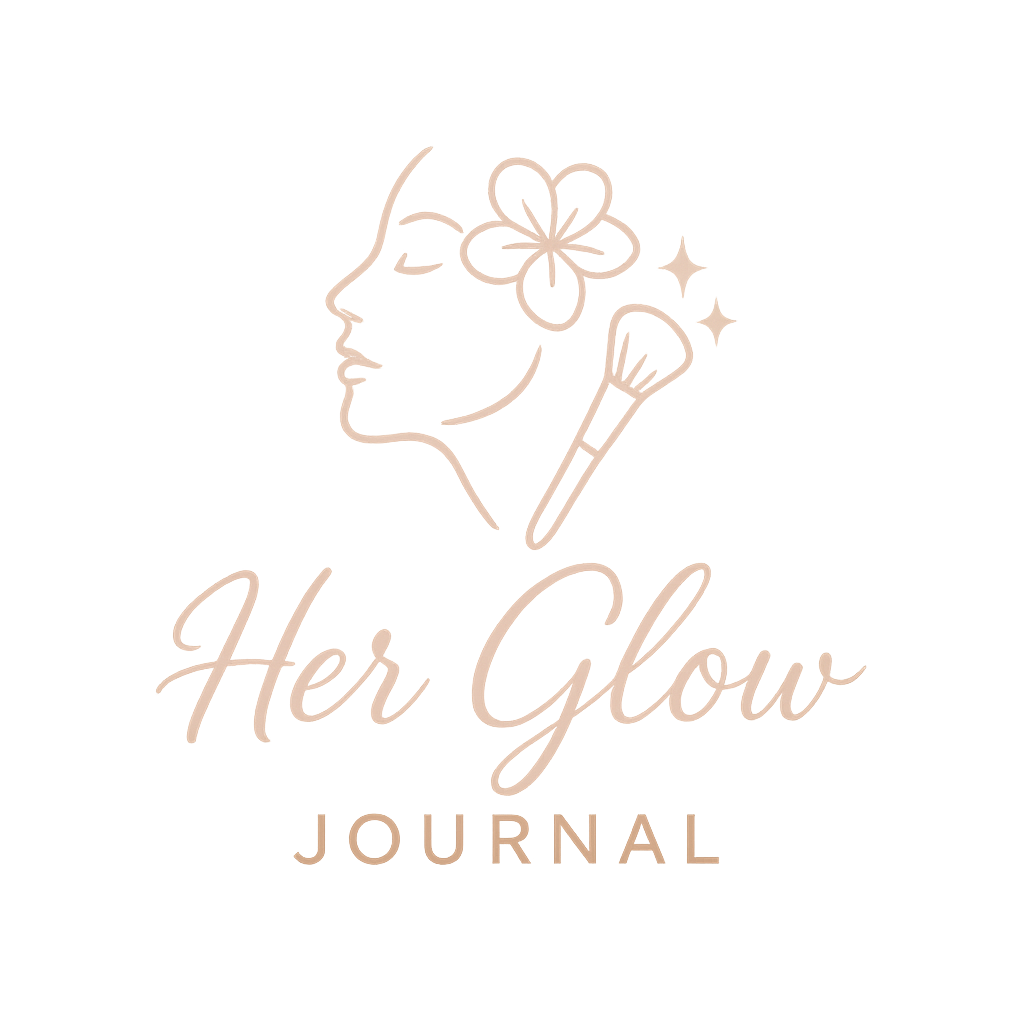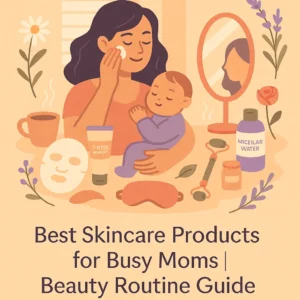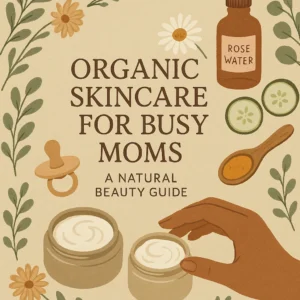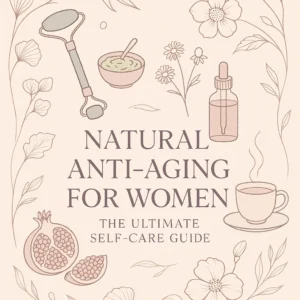Review Organic Clear Skin for Beginners | Makeup Guide
Many people strive for clear, healthy skin and are turning to organic and clean beauty for help. Unlike conventional products, organic skincare and makeup use natural or minimally processed ingredients, avoiding many synthetic chemicals. This can make them gentler on the skin and better for sensitive skin types. In fact, experts note that even a handful of ingredients (like certain preservatives or fragrances) can cause irritation or long-term health concerns. Clean beauty brands prioritize transparency – they often use botanical extracts and safe synthetics, and steer clear of harmful additives like parabens, phthalates, and formaldehyde-releasing chemicals.
The benefits of organic products include fewer irritants and pollutants going on your face (and into the environment). For example, clean makeup often replaces toxic pigments and silicones with natural colorants and oils, reducing clogging and irritation. Many clean brands also add skin-loving ingredients (aloe, antioxidants, oils) into their formulas. As Natalie Gale of The Good Trade explains, these foundations use “natural and organic ingredients, along with safe synthetics, [that] reduce the risk of irritation” – ideal if you have sensitive or acne-prone skin.
Switching to an organic routine can have some transition effects. A common issue is skin purging, which happens when active ingredients in new products (like AHAs, BHAs or retinoids) speed up cell turnover. In practice, this can look like temporary breakouts of whiteheads or blackheads as clogged pores clear out. Dermatologists note that purging typically affects areas that already tend to break out and should subside in a few weeks. It’s a sign the product is working from within, so don’t panic if your skin initially “overreacts” – it often improves as your skin adjusts. Still, if breakouts are severe or widespread, they may be true irritation rather than purging, so introduce strong products slowly.
Why Go Organic for Clear Skin?
Organic and clean products minimize or eliminate common irritants. For example, Harvard experts point out that fragrances, preservatives like formaldehyde donors (MCI/MI), and common chemicals can trigger dermatitis and other issues. Clean beauty steers clear of these – no synthetic fragrances, parabens, mineral oils or aggressive alcohols. Instead, look for ingredients you can pronounce: soothing aloe vera, hydrating glycerin or hyaluronic acid, nourishing plant oils (jojoba, avocado, shea), and antioxidants like vitamins C and E. These ingredients not only avoid irritation but can actively improve skin health. For instance, ILIA’s clean foundation is formulated with niacinamide and aloe juice to hydrate and calm skin.
In short, going organic lets you “take a closer look at what you put on your skin” and avoid unnecessary toxins. Brands with third-party certifications (EWG Verified, Made Safe, USDA Organic, Ecocert, etc.) have been vetted for ingredient safety. Shopping for certified products gives extra peace of mind that your skincare and makeup meet higher health and environmental standards.
Key Ingredients to Look For
Natural ingredients often come with skin benefits. When building an organic routine, look for the following:
- Niacinamide (Vitamin B3): An anti-inflammatory that reduces redness and brightens. Studies show it helps calm acne and even out skin tone.
- Aloe Vera: A classic soothing, moisturizing agent. Rich in vitamins A, C, and E, it hydrates without greasiness and helps heal irritation. Many cleansers and serums use aloe for its calming effect.
- Hydrators (Hyaluronic Acid, Glycerin): Attract and lock in moisture. Hyaluronic acid plumps skin by binding water, while vegetable glycerin softens and heals the barrier.
- Plant Oils & Butters: Look for jojoba, argan, squalane (plant-derived), shea butter, avocado oil, etc. These “good fats” nourish dry skin and seal in moisture without harmful petrochemicals.
- Antioxidants & Vitamins (C, E): Help protect skin from free radicals and brighten the complexion. Vitamin C serums and green tea extracts are common antioxidant boosters.
- Botanical Extracts: Herbs and flowers with soothing properties. For example, witch hazel (a natural toner) gently controls oil and inflammation; calendula (marigold) is antiseptic and anti-itch; chamomile contains flavonoids that reduce swelling and calm skin.
- Centella Asiatica (Cica/Tiger Grass): Great for irritated or post-acne skin. It contains asiaticoside and madecassoside, compounds that boost collagen and repair the barrier. Many “cica creams” help redness and sensitivity.
In general, your goal is hydration and barrier support. These natural ingredients work gently, unlike aggressive synthetics. Many clean products are formulated like skincare – for instance, the ILIA True Skin Serum Foundation includes aloe juice and niacinamide for hydration alongside pigment.
Ingredients to Avoid
Just as you seek beneficial botanicals, avoid known troublemakers. Clean-beauty experts advise steering clear of: synthetic fragrances (can include hidden phthalates), parabens, phthalates, formaldehyde or formaldehyde-releasing preservatives, and harsh sulfates or alcohols. The Good Trade warns against BHA/BHT preservatives (possible carcinogens), non-organic mineral oil (it can suffocate the skin), and any ingredients flagged by groups like EWG or the “Dirty Dozen” lists.
For acne-prone or sensitive skin, avoid heavy silicones or waxes that can trap oil. Also be cautious of chemical sunscreens (oxybenzone, octinoxate) if you’re trying to keep things natural – instead use mineral SPF (zinc oxide or titanium dioxide). As a rule, check labels for certified-natural standards (USDA Organic, Ecocert/COSMOS). These certifications prohibit many synthetic additives. The more transparent the ingredient list (and certification logos), the more confidence you can have in the product’s safety and effectiveness.
Affordable Organic Skincare Routine for Beginners
A clear-skin regimen doesn’t have to be complicated. Here’s a simple daily routine using clean, affordable products:
1. Cleanse.
Use a gentle, natural cleanser twice a day. Choose a formula with soothing botanicals and mild surfactants – for example, a gel or cream cleanser containing aloe vera, chamomile, or honey. Avoid stripping soaps. Recommended: Honest Beauty Gentle Gel Cleanser (contains chamomile & calendula) or Cocokind AHA Jelly Cleanser (with fruit AHAs and hyaluronic acid), which both clean without irritation. Massaging your cleanser in circular motions also lightly exfoliates and boosts circulation.
2. Exfoliate (1–2×/week).
This is optional but helpful for dull skin. Use a gentle scrub or acid toner. Natural exfoliants include oatmeal, ground sugar, or walnut shells (in a scrub) or a toner with alpha-hydroxy acids (fruit acids) or salicylic acid. For example, Acure Brightening Facial Scrub ($9–12) uses sea kelp and green clay to buff away dead cells and brighten. Or try a lactic/mandelic acid toner a couple times a week. Don’t over-exfoliate – once or twice weekly is enough.
3. Tone.
After cleansing, a good toner helps rebalance pH and refine pores. Pick an alcohol-free herbal toner. Classic choices are rose water, witch hazel with rose (like Dickinson’s Enhanced Witch Hazel) or green tea toners. Witch hazel specifically “eliminate[s] excess oil, calm[s] inflammation, unclogs pores, and smooths complexion”. Spritz or apply with a cotton pad. If your skin is very dry, you can skip toner and go straight to serum.
4. Serum/Essence.
This is where you deliver skin-targeted actives. For beginners, a hydrating serum with vitamin C, niacinamide, or hyaluronic acid is great. These ingredients brighten and hydrate without being irritating. A vitamin C serum (from an organic/clean brand) can fade dark spots, while niacinamide reduces redness. Apply a few drops on damp skin for best absorption. (If your budget is tight, a simple aloe or rosewater toner can double as a hydrating mist at this step.)
5. Moisturize.
Lock in all that goodness with a natural moisturizer. Even oily skin needs some hydration. Choose a cream or lotion rich in botanical oils but without pore-cloggers. Ingredients like jojoba oil, shea butter, hemp seed oil, and ceramides nourish without heavy residue. For example, Andalou 1000 Roses Day Cream (with rosewater and ceramides) is gentle and fragrance-free, ideal for sensitive or combination skin. For dry skin, reach for a thicker cream with shea butter or olive oil. Creams often contain actives like vitamins C/E and hyaluronic acid too.
6. Sunscreen (AM only).
This is non-negotiable. Use a mineral (physical) SPF 30+ every morning. Natural sunscreens use zinc oxide and/or titanium dioxide to block UV rays. They sit on top of the skin and tend to be less irritating than chemical filters. ThinkMineral or Blue Lizard are drugstore examples (look for labels like “non-nano zinc”). Even on cloudy days, a dollop of mineral sunscreen protects your new skin.
Morning vs. Evening: In the morning, follow steps 1–4 (cleanse, tone, serum, moisturize) and then apply sunscreen. In the evening, repeat cleanse-tone-serum-moisturize but skip SPF. If using a heavy makeup product (like a tinted moisturizer or powder), double-cleanse at night (oil cleanser first, then gentle wash).
Pro Tips: Always apply products to damp skin (helps absorption). Start with the thinnest consistency (serum) and end with thicker (cream). Patch test any new product on your jawline for a few days before using all over. And remember: consistency is key. It can take 4–6 weeks to notice real changes.
Step-by-Step Organic Makeup Guide for a Natural Look
Once your skin is prepped, an organic makeup routine can enhance your glow without irritation. Aim for minimal, skin-like coverage:
1. Primer/Base.
You can use a lightweight natural primer or simply a few sprays of a hydrating mist as a primer. For example, applying a rosewater or aloe facial mist creates a dewy base for makeup. (These natural mists also have soothing and antiseptic properties.) Makeup primers are formulated to even out skin texture; a recent study calls a primer a “base cosmetic correction to even out the surface of the face prior to foundation”. Some clean primers even include sunscreen and antioxidants. If you use primer, smooth on a pea-sized amount to blur pores and help makeup last longer.
2. Foundation or Tint.
Choose a lightweight foundation, tinted moisturizer, or BB/CC cream from a clean brand. Look for formulas that combine skincare with pigment. For instance, ILIA’s True Skin Serum Foundation (in our comparison table below) contains aloe juice, niacinamide, and squalane. It gives light-to-medium, dewy coverage and is backed by skin-loving ingredients. Juice Beauty’s Phyto-Pigments Foundation ($45) is another favorite; it blends skin-friendly grape seed oil and aloe for a natural finish. Apply with clean hands or a brush, blending well. Remember, the goal is “skin that looks better after you take off makeup, not worse”.
Figure: Clean makeup can still look polished – Saie’s Super Skin Tint (shown above) is an example of a natural foundation that hydrates and evens skin tone. Like many clean foundations, it contains hyaluronic acid and plant oils.
3. Concealer.
Next, spot-conceal any blemishes or under-eye circles. Pick a natural concealer or multi-stick with nourishing oils (coconut oil, vitamin E, etc.). For example, RMS Un-Cover-Up is a cult clean concealer ($38) made with organic coconut oil and beeswax; it covers imperfections without drying. Dab a small amount only where needed and blend. Because organic concealers often double as skincare, they may offer light hydration to delicate eye areas.
4. Eyes.
Keep eye makeup simple for a natural look. You might skip eyeshadow entirely or use soft, earthy tones (look for brands like Westman Atelier or Ilia that use mineral pigments). Use a clean mascara (e.g. Honest Beauty or ILIA Limitless Lash) that conditions with peptides. If you wear eyeliner, try an organic formula or a cocoa-based kohl pencil. For brows, a tinted brow balm or clear organic brow gel (jojoba-based) sets hairs naturally. The idea is to enhance eyes subtly – clean brands tend to avoid heavy waxes or petrolatum that can flake or irritate.
5. Lips.
Finish with a tinted lip balm or “lippy” that doubles as treatment. Botanical oils (coconut, shea, jojoba) are common in clean lip products. For a flush of color, tinted oils by ILIA or Kosas give shine and care. Even a classic Burt’s Bees tinted lip balm (about $5) with beeswax and minerals can add pigment while smoothing your lips.
6. Setting Spray.
To lock in your look, spritz a setting mist. Organic facial mists (rosewater, chamomile water, green tea) act as gentle setting sprays. As L’Oréal’s beauty editors note, a setting spray is like a “top coat” for your makeup – it helps everything stay put and fresh longer. It can also prevent makeup from “fading, transferring, or migrating” throughout the day. Look for alcohol-free formulas that contain glycerin or botanical extracts for extra hydration. Even a homemade spritz of rosewater can give a dewy finish.
Throughout your makeup routine, less is more. Clean beauty foundations and concealers are generally lower coverage than conventional heavy cosmetics, so embrace your natural skin texture. The aim is a “no-makeup” look: even skin tone, groomed brows, a hint of color on lips and cheeks, and defined lashes. Touch up only where needed (for example, blot excess oil with a clean tissue or add a second coat of mascara mid-day).
Recommended Organic Skincare and Makeup Products
The table below compares some top-rated clean beauty products by category. These picks are affordable, cruelty-free, and widely available. Note the key ingredients and ideal uses for each:
| Product (Category) | Price Range | Key Ingredients | Best For |
|---|---|---|---|
| Honest Beauty Gentle Gel Cleanser (Cleanser) | $8–$15 | Chamomile, calendula, PHA (gluconolactone) | All skin types, gentle daily cleanse |
| Cocokind AHA Jelly Cleanser (Cleanser) | ~$18 | Fruit AHAs (hibiscus acids), hyaluronic acid, aloe | Oily/acne-prone (gentle exfoliation) |
| 100% Pure Green Tea Cloud Cleanser (Cleanser) | ~$28 | Aloe vera, calendula, green tea | Combination to oily (deep, soothing clean) |
| Dickinson’s Witch Hazel Toner (Toner) | ~$8 | Witch hazel extract, rosewater | Oily/combination (tones, calms pores) |
| Acure Brightening Facial Scrub (Exfoliant) | ~$12 | Sea kelp, French green clay | All skin (brightens, smooths texture) |
| Thinkbaby Mineral Sunscreen SPF 50 (Sunscreen) | ~$13 | Non-nano zinc oxide | Sensitive all, broad-spectrum UV protection |
| ILIA True Skin Serum Foundation (Makeup) | $54 | Aloe juice, niacinamide, squalane | Normal/dry (light dewy coverage) |
| Juice Beauty Phyto-Pigments Foundation (Makeup) | $45 | Grape seed oil, aloe vera, coconut alkanes | Normal/dry (light–medium matte finish) |
| RMS Beauty ReEvolve Foundation (Makeup) | $45–55 | Jojoba oil, squalane, glycerin, aloe | Dry/balanced (medium-full coverage) |
| Burt’s Bees Tinted Lip Balm (Lip) | ~$5 | Cocoa butter, beeswax, vitamin E | All (sheer color, moisture) |
Each of these brands emphasizes clean ingredients. For instance, ILIA’s foundation is backed by skincare actives – it “contains niacinamide, allantoin, and aloe, all at levels shown to benefit the skin”. Juice Beauty’s foundation blends antioxidant grape seed oil and aloe juice for skin-friendly coverage. On the skincare side, Honest Beauty’s Gel Cleanser uses polyhydroxy acids and botanical extracts to cleanse very gently. And Acure’s scrub specifically targets dullness with kelp and clay. These examples show how clean products often combine performance with natural nutrition.
By following these routines and choosing products like those above, beginners can transition smoothly to an organic regimen. Remember to introduce new products one at a time and continue hydrating and protecting your skin. Over weeks, your complexion should start to clear up naturally, thanks to gentler formulations and supportive ingredients. Embrace the process: with patience, you’ll achieve glowing, healthy-looking skin using only the gentlest, cleanest beauty products!





